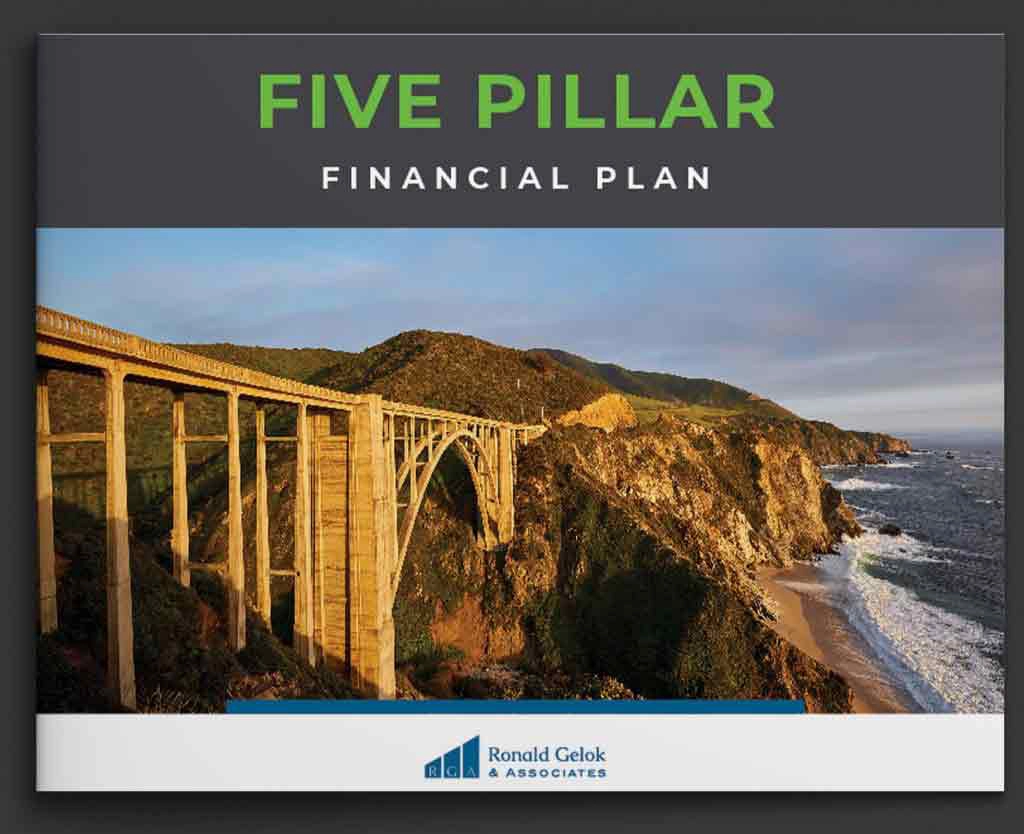RETIREMENT QUESTIONS FOR EDUCATORS

As an educator contemplating the transition from work to retirement, we understand you may have several questions about when and how you can retire. This report addresses common questions and offers strategies to help you plan for a comfortable retirement.
The retirement landscape is not what it was, and for many, the ability to retire can seem elusive. Many Americans are worried about whether they can afford to retire and how to ensure their savings last as long as needed.
Retirees and pre-retirees in the education field have the added challenge of dealing with complex and ever-changing retirement benefits, and often need help understanding their options. For educators who have spent a lifetime helping others achieve their best, deciding to retire may involve a mix of emotions. You may be worried about whether you can afford to retire. You may feel ambivalent about leaving colleagues and a beloved profession. You also may wonder about what you will do when you are no longer working.
The combination of mixed emotions and financial worries may lead you to delay your retirement planning. However, we believe the most prudent course is to start thinking now about your retirement needs. By looking ahead today, you can develop informed perspectives and strategies about your retirement options and make adjustments where necessary.
We’ve developed this special guide to help teachers, administrators, and other professionals in the education field understand their options and strategize for a comfortable retirement.
RETIRING WITH DEBT?
Between 2003 and 2015, the amount of US debt held by people aged 50 to 80 years old increased by 59%.
Source: “The Graying of American Debt.” Federal Reserve Bank of New York. https://www.newyorkfed.org/medialibrary/media/newsevents/mediarepresentativey/2016/Graying-of-American-Debt-02122016.pdf [Accessed January 17, 2017.]
If you are concerned about being able to retire, you are not alone. Millions of Americans worry about whether their retirement savings will be enough to live comfortably. In fact, when Americans think about retirement, the top concern for many is a fear of running out of money — which they fear even more than death.
In the education sector, that concern is compounded by complicated retirement plans, student loan debt, and universities’ budgetary issues. A 2015 study found that 55% of educators expecting to work beyond normal retirement age say their personal finances require them to keep working.2 So a vast majority of professors are pushing off their retirement date for as long as they can.
The decision to retire is a very personal one that depends on a number of important factors, such as your age, financial circumstances, health, and family situation. You also need to know whether you are eligible to collect benefits from your pension or sponsored retirement plan. Be aware that many traditional pension plans have both age and service requirements you must meet before you can start collecting a retirement benefit. If you have questions about your eligibility, be sure to speak to your financial representative about your specific circumstances.
KNOW YOUR UNIQUE NEEDS
Today’s retirement culture demands that retirees develop personalized retirement strategies that reflect their unique financial life. By using online calculators for estimating withdrawals to creating a retirement strategy with a financial representative, you can approach retirement strategizing in many ways. As you look ahead, you will need to understand how various factors such as life expectancy, wealth, income needs, risk, and market environment affect your calculations, With these details in place, you and your representative can develop a strategy designed to balance your current cash flow while preserving income that you won’t outlive.
If you have run the numbers and think you may have a retirement-income shortfall, do not panic. Several strategies can help you increase your potential retirement income or reduce your expenses.
INCREASING YOUR SAVINGS RATE may allow you to make up your retirement shortfall. Contribute as much as you can to tax advantaged retirement plans, and consider opening a Roth IRA. If you are 50 or older, use catch-up provisions to boost your retirement contributions.
DELAYING RETIREMENT can help you buy time. By working longer and adding to your savings, you will have more time to grow your assets, increase Social Security benefits (if you are younger than 70 and qualify to receive these funds in your state), and shorten the amount of time your savings must last.
DOWNSIZING YOUR HOME AND LIVING EXPENSES can help you decrease the income you will need in retirement. Many retirees are empty nesters who can reduce their expenses by moving into smaller homes.
WORKING DURING RETIREMENT can create extra income while keeping you active and doing something you love. Many educators retire but continue teaching part time. Senior administrators become consultants and advisors. Other retirees pursue passions for gardening, lecturing, or writing. Keep in mind, though, that working while collecting withdrawals may affect your Social Security benefits if you are younger than your full retirement Age.
MANAGING SOCIAL SECURITY AND PENSION LIMITATIONS can help you prepare to have the retirement income you need. At least 15 states do not offer Social Security to educators, and not every educator qualifies to receive pension benefits. In addition, if you work in public education and do not pay Social Security taxes at the government job that provides your pension, the Government Pension Offset (GPO) may reduce any Social Security benefits you receive through your spouse or as a widow or widower.4 Further, if you do receive Social Security and are eligible for a pension based on earnings that your Social Security does not cover, the Windfall Elimination Provision (WEP) could reduce your benefits.5 To manage your retirement gaps, you need to know your specific restrictions and opportunities.
Health care expenses are a major concern for today’s retirees, and those who aren’t planning ahead may find themselves in trouble down the road. With life expectancies rising, today’s retirees can expect to live well into their 80s. Combine longer life spans with rising medical costs — and the fact that health care expenses can skyrocket during a serious illness — and retirees have pressing needs to prepare for.
According to an AARP survey, in 2015, a couple retiring could expect to spend 67% of their lifetime Social Security benefits on out-of-pocket health care costs.6 For people 65 and older, the average health savings account balance is only $5,016.7
Not being adequately prepared for your health care expenses could greatly jeopardize your ability to retire comfortably. And those who retire earlier may need even more assets to cover their health care costs before they are eligible for Medicare. Fortunately, with adequate preparation and personalized strategies, you can help tame health care costs in retirement.
Everyone’s health care needs are different, which is why it’s important to consider factors like your age, health, and family medical history when estimating your potential expenses.
You also should determine whether you are eligible for any employer-sponsored health care once you retire. Any benefits you receive could reduce your out-of-pocket costs and, thus, the amount you need to save for medical expenses.
In addition, retirement health care plan accounts like a Retiree Health Savings Plan may be available through your employer and can help provide a tax-advantaged way to save for future health care expenses. A financial representative can help you determine whether this option is available to you and how it may fit your overall retirement objectives.
For most retirees, Medicare will form the backbone of their health care plan. Medicare has gone through some significant changes due to the Affordable Care Act (ACA), and with a new presidential administration, there’s no way to predict how it may change in the future. A financial representative can help you stay abreast of details like eligibility, coverage, deductibles, and benefits.
It is also important to think about how you will pay for services to help you remain independent if you need help with daily living. According to a 2016 Genworth study, having an in-home health aide for 44 hours each week costs an average of $46,332 per year, and the national average annual cost of a private room in a nursing home topped $92,376.8 Generally, Medicare and employer-sponsored insurance do not cover long-term care. An investment representative can help you consider your current health, family medical history, and other factors, and help you evaluate your options for funding your long-term-care needs..
- Basic expenses like housing, utilities, food, debt, service, and other living expenses.
- Lifestyle expenses like travel, philanthropy, gifts, and entertainment.
- Social Security benefits
- Defined benefit pension income
- Income from other sources like rental properties, inherited IRAs, and part-time work
HOW MUCH OF A FINANCIAL GAP DO I NEED TO COVER?
STEP ONE
STEP TWO
STEP THREE
Unfortunately, no simple formula or approach exists to determine a safe, absolute withdrawal rate. The “4%” rule was popularized in previous decades and guided retirees that they could safely withdraw 4% to 4.5% of their portfolio each year. In our current environment of historically low interest rates and volatile markets, this rule may no longer apply.

Today’s average 65-year-old couple can expect to pay— at at minimum— $260,000 on health care costs during retirement.. Today’s average 65-year-old couple can expect to pay— at at minimum— $260,000 on health care costs during retirement.
Source: Fidelity Retiree Health Care Costs Estimate
Many different retirement plans exist, providing an array of options for creating retirement income that helps you support your desired lifestyle. While the best way for us to answer your specific questions is to meet with you personally, we’ve developed a list of common retirement plan types and some specific concerns you may want to think about. Many different retirement plans exist, providing an array of options for creating a retirement income that helps you support your desired lifestyle. While the best way for us to answer your specific questions is to meet with you personally, we’ve developed a list of common retirement plan types and some specific concerns you may want to think about.
Defined-Benefit (DB) Plans9 also are known as “pension plans” and guarantee a lifetime retirement benefit to participants based on factors such as age, years of employment, and salary. Though DB plans are disappearing, they are still common among public school systems across the United States. If you are enrolled in a DB plan, your employer takes care of investing all contributions to the pension fund and bears the risk of providing the guaranteed level of retirement benefits. Participants in DB plans have some special financial strategizing issues. Federal rules like the Windfall Elimination Provision (WEP) mean that your pension income may reduce your Social Security benefits, depending on the rules in your state. DB Plan participants may be able to choose among different retirement income options and schedules. Because of budgetary issues, some employers have sought to reduce or modify their responsibilities to pensioners. If you are concerned about possible reductions in your benefits, consult with your investment representative about strategies to help mitigate your risk.
Defined-Contribution (DC) Plans10 are the most popular employer- sponsored retirement plans available today. The most common types are 401(k)s, 403(b)s, 457s, and Thrift Savings Plans. As a plan participant, you decide how much to contribute to your plans from each paycheck, allocate your money between the investment choices available to the plan, and assume all investment risk. Often, your employer will match some of your contributions. Your money grows tax-deferred because contributions are made with pre-tax income. Once you retire, you retain control over your assets and can choose to roll them over into an Individual Retirement Account (IRA) or other types of accounts.
Hybrid Retirement Plans11 combine features of both defined-benefit and defined-contribution plans. For example, your employer may offer a cash-balance plan that they contribute to as though it were a defined benefit plan — but employees have the option of receiving the retirement income either as a stream of payments or a lump-sum distribution. Lump sums are popular, because investors can roll them into an IRA or new retirement plan, allowing retirement savings to potentially continue growing.
Supplemental Retirement Plans are provided by some employers to allow you to save more for retirement beyond what’s contributed to your primary retirement plan. Overall, contribution limits, early withdrawal penalties, and other details can vary a great deal from one plan to another. As a result, it’s a good idea to review your retirement plan with a qualified financial representative.
WHERE DOES RETIREE HEALTH CARE MONEY GO?
%
Medicare Part B and Part D Premiums
%
Co pays, coinsurance, & deductibles
%
prescription drug out-of-pocket expenses
An increasing number of employers are offering early-retirement packages to professors and other employees. Typically, they will give you a lump-sum distribution based on your age, service, and contract. The decision about whether to keep working or accept a buyout is complex. You will want to consider all of your options and run the numbers before making a decision. Some factors to address include the following: An increasing number of employers are offering early-retirement packages to professors and other employees. Typically, they will give you a lump-sum distribution based on your age, service, and contract. The decision about whether to keep working or accept a buyout is complex. You will want to consider all of your options and run the numbers before making a decision. Some factors to address include the following:
- How will early retirement affect your pension benefits and other retirement income?
- Is Social Security an option for you, and if so, should you take it immediately or allow your benefits to grow?
- Does the buyout come with low- or no-cost health insurance until you are eligible for Medicare?
- Do you have enough money saved for retirement, or do you need to keep working to save more?
- What are the tax implications of taking a lump-sum distribution?
- Is there a risk of future layoffs at your employer? Do you love what you do?
Ultimately, many factors will affect your decision to accept an early-retirement package. We suggest consulting with your financial representative to help you understand your options and the benefits and drawbacks of each choice.
- How much income do you need in retirement?
- If a Deferred Retirement Option Program (DROP) is available to you, is it worth continuing to work while your retirement benefits keep accumulating?
- Do you need survivor-benefit options for your spouse?
- What other sources of income do you have?
- Do you plan to work after retiring? What is the age difference between you and your spouse?
- What are your health care insurance options?
- Do you have life insurance?
No matter what type of retirement plan you have, a financial representative can help you evaluate your options and choose a strategy designed to Maximize your retirement income while protecting your wealth.
Everyone’s retirement dream is different, and an increasing number of active Americans are redefining retirement for themselves in new and interesting ways. Today’s retirees can expect to live long, active lives, making retirement more like the dawn of a new chapter of life rather than a sunset. Knowing what this lifestyle means to you requires taking the time to thoughtfully brainstorm your vision.
We hope you’ve found our retirement guide interesting and informative and a helpful starting point for details to consider. While retirement strategizing is complex, you can create a more comfortable retirement tomorrow by taking the steps you need today. Most of all, we want to encourage and support you as you prepare for retirement and for this next stage of your life. We hope you’ve found our retirement guide interesting and informative and a helpful starting point for details to consider. While retirement strategizing is complex, you can create a more comfortable retirement tomorrow by taking the steps you need today. Most of all, we want to encourage and support you as you prepare for retirement and for this next stage of your life.
Remember, as you navigate your transition from work into retirement, we are here to serve as a resource for you and your family. We are happy to answer any questions you may have about your personal financial situation or future goals.
In addition, if you have any questions about the information presented in this report, please don’t hesitate to contact us. We enjoy and appreciate the opportunity to help you fulfill your retirement goals and live your best life. To schedule a conversation with us, click on the button below and select times that work best for you!
FOOTNOTES | DISCLOSURES | SOURCES
Opinions, estimates, forecasts, and statements of financial market trends that are based on current market conditions constitute our judgment and are subject to change without notice. This material is for information purposes only and is not intended as an offer or solicitation with respect to the purchase or sale of any security. Investing involves risk including the potential loss of principal. No investment strategy can guarantee a profit or protect against loss in periods of declining values. Fixed-income investments are subject to various risks including changes in interest rates, credit quality, inflation risk, market valuations, prepayments, corporate events, tax ramifications, and other factors. Opinions expressed are not intended as investment advice or to predict future performance. Past performance does not guarantee future results. Consult your financial professional before making any investment decision. Opinions expressed are subject to change without notice and are not intended as investment advice or to predict future performance. All information is believed to be from reliable sources; however, we make no representation as to its completeness or accuracy. Please consult your financial advisor for further information.
All information is believed to be from reliable sources; however, we make no representation as to its completeness or accuracy. Please consult your financial advisor for further information. By clicking on these links, you will leave our server, as they are located on another server. We have not independently verified the information available through this link. The link is provided to you as a matter of interest. Please click on the links below to leave and proceed to the selected site.











